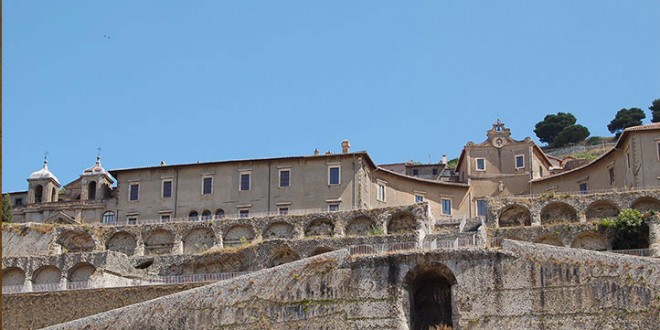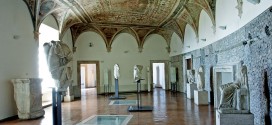Ancient myths attribute the founding of the city to different characters; Greek sources lead back to Prainestos, son of King Latinus and grandson of Ulysses, or Telegono, son of Ulysses and Circe. Virgil, however, collects an Italic tradition according to which it is Caeculus to build the city, the blind son of the god Vulcan, killed by Aeneas. Even illustrious Roman family Caecilii traces its origins back to him. The archaeological research confirm the high antiquity of the first Prenestini settlements. More recent research has shown evidences of a continuous presence on site of Castel San Pietro Romano, that in historical times hosted the fortress of the city, dating back at least to the mid-second millennium BC. Here it was supposed to exist a village, between the Late Bronze Age and the very first Iron Age ( IX-XI centuries BC). The settlement of Castel San Pietro coexisted together with other small villages in the area, to which can be attributed the sporadic burials/ tombs, dating from the 8th century BC, found along the ancient route of Prenestina.
However it seems acertained that between the late 8th and 7th centuries BC, these villages were united in one single center, giving life to the proper city. In this period of the so-called “Orientalizing” era are the cities of death, the necropolis, that inform us over the cities of alive ones. The continuity of life for over 2800 years on site of now called Palestrina have destroyed the oldest traces of the past, during which the houses were simple huts, leaving behind only the burials/tombs and their funeraly dowry.
In the 7th century BC Praeneste begins to exploit its strategic geografical position thanks to which the city controlled the roads of communication between the sea – on a clear day the coast is still visible from the highest points of Palestrina – and the background Apennines, as well as some important internal paths made by shepherds during the transhumance, that from Etruria and Latium reached southern Italy.
The centrality of the city within trading system of that time is seen by its rich accoutrements of princely tombs (Villa Giulia Museum), whose precious objects show contacts and exchanges with all the populations of the Mediterranean, from Greece to the Phoenician coast till/up to Egypt. The artistic quality and the value of these findings tell us how in community of Prenestina emerged aristocracy linked to commercial activities.
From the 7th century, and until the mid-fifth century BC, Praeneste entertained also particularly intense relationship with the Italic world, not only with the Etruscans, but also with the people of the hinterland of the Apennine and with Piceno. The evidenced of this communication is traceble through the findings inside the Prenestina tombs, such as female ornaments, weapons of war, plate-armor of bronze, imported from these areas or producted at Palestrina using the models from those areas. Those objects testify abouth marriages between local people and women from Piceno but also phenomena of mercenary involving the men.
 Archeopalestrina Percorso archeologico di Palestrina, l'antica Praeneste
Archeopalestrina Percorso archeologico di Palestrina, l'antica Praeneste

